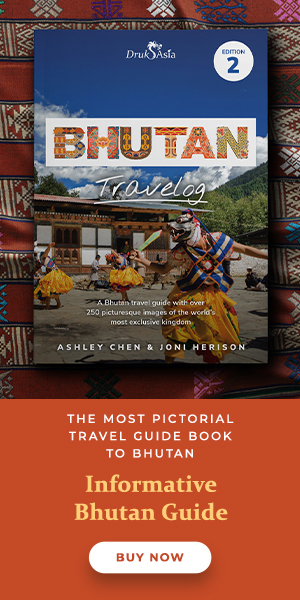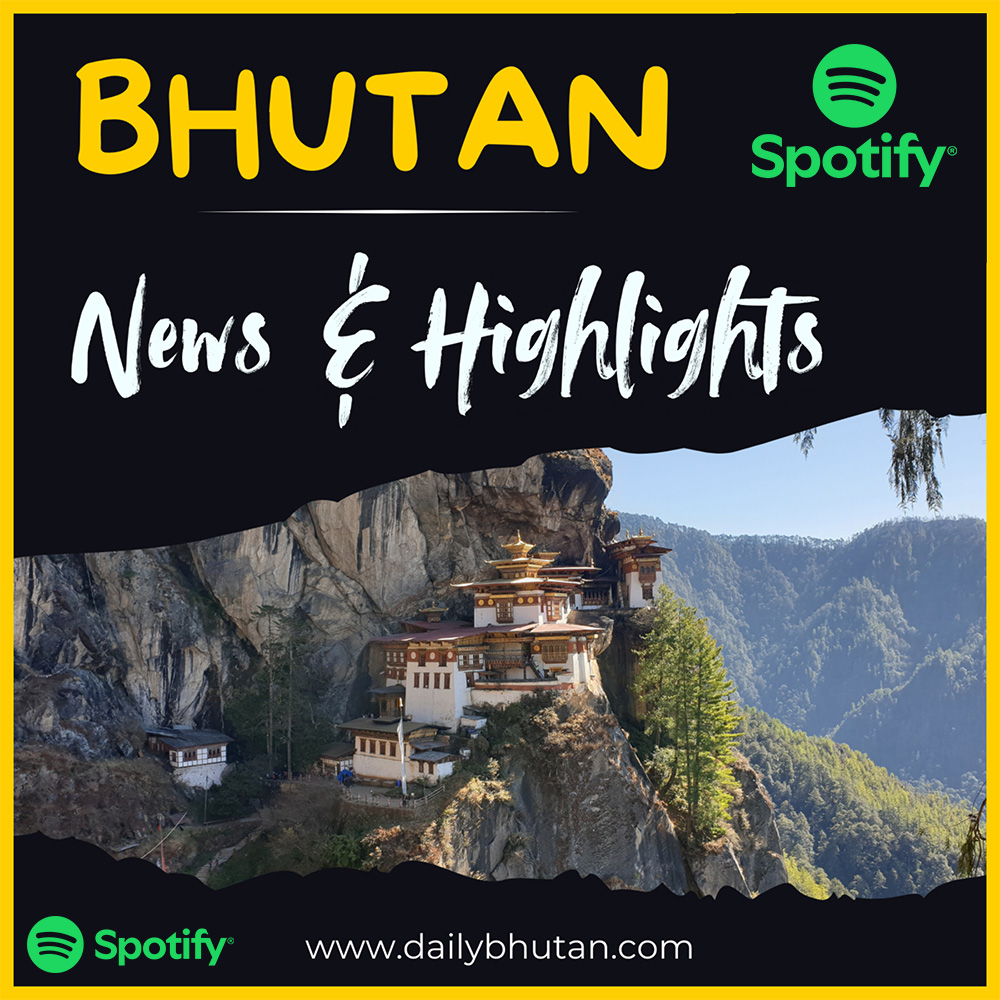Transforming The Economy Through Tourism: A High Value, Low Impact Dilemma
What measures must Bhutan take to prevent the destruction that challenges other niche destinations, in a world where a growing middle class is hungry for new destinations to explore?
 Taktshang (Tiger's Nest) is the most visited tourist spot in Bhutan.
(Source: Druk Asia)
Taktshang (Tiger's Nest) is the most visited tourist spot in Bhutan.
(Source: Druk Asia)
By Siok Sian Pek-Dorji | The Druk Journal
For international tourists, Bhutan has long been a much sought after “global hotspot”, a rare destination. A veteran American tour operator who has been a promoter of high-end tours to Bhutan since the 1980s, now disagrees: “Bhutan used to be a high value, low impact destination,” he said, just back from Paro Taktsang in early December. “But not anymore.” If this is not quite a fact yet, it is a dire warning.
The second highest contributor to the national exchequer appears to have reached a crossroads: One way leads to exclusive cultural tours and spectacular treks, boutique hotels and traditional hospitality, the other to the ravages of mass tourism, like noise pollution, traffic jams, untended garbage and high stress.
Adding to the dilemma are “regional tourists” from India, Bangladesh, and Nepal, who outnumber “high end” international visitors, as the numbers increased to 254,704 in 2017. The regional influx is unplanned, with more Bhutanese cashing in on the trend every day and, in the process, threatening the balance of Bhutan’s “high value low impact” tourism policy.
The implication here is the tussle between Gross Domestic Product and Gross National Happiness. What measures must Bhutan take to prevent the destruction that challenges other niche destinations, in a world where a growing middle class is hungry for new destinations to explore?
“Bhutan surprises me with its very progressive thinking on tourism,” said a recent visitor. “But if you let a million people in, you will destroy your environment, your culture. I hope you manage to keep mass tourism at bay.”
This article highlights the emerging threats and concerns facing an industry that earns the highest foreign exchange for the country. It emphasises the need for a concerted response and more integrated planning to maintain the balance of economic growth and a unique identity.
The Beginning
Bhutan opened its doors to tourism in 1974 with an image of exclusivity enhanced by its cautious high-yield tourism policy. The government charged USD 200/-to 250/-a day for foreign visitors, to control low spending, high impact tourists, or low spending tourists who tend to typically leave a higher carbon footprint with greater impact on the environment. This included a USD 65/-sustainable development fee (SDF) that goes directly to the government to support social welfare programmes.
This policy enabled the country to slowly open up to the world, set up services and regulate the flow of tourists into a landlocked kingdom where services and infrastructure were limited. This slow growth in tourism was necessary for several reasons. Bhutan is a small country with fewer than 750,000 people. Many of the country’s cultural festivals and spiritual places -- the essence of its identity -- are small local events and sites that can be easily over-run by mass tourism. The pristine environment is recognised as a home to rare plant and animal species.
But “high value, low impact” is a loose policy that needs to be translated into a clear strategy and, more importantly, into action for an industry threatened by sheer numbers.
A Steady Growth
Tourism is Bhutan’s largest foreign exchange earner and second largest source of revenue after hydropower. In 2017, tourism revenue was USD 79.8 million (M), up from USD 73.7M in 2016. Tour operators, hotels, and affiliated tourism services earned USD 53.4M, up from USD 49.75M in 2016. This is a notable increase from the late 1980s when tourism contributed just over USD 2M to the government.
Statistics from the Tourism Council of Bhutan, the apex tourism organisation, show a steady growth in numbers. Arrivals increased by 35.1 percent in 2016 with 209,507 visitors. International visitors recorded a 35 percent increase over 2015 while regional visitors grew by 50 percent in the same period. 2017 saw a total of 254,704 visitors. International arrivals grew by 14.1 percent and regional tourists by 24.9 percent from 2016.
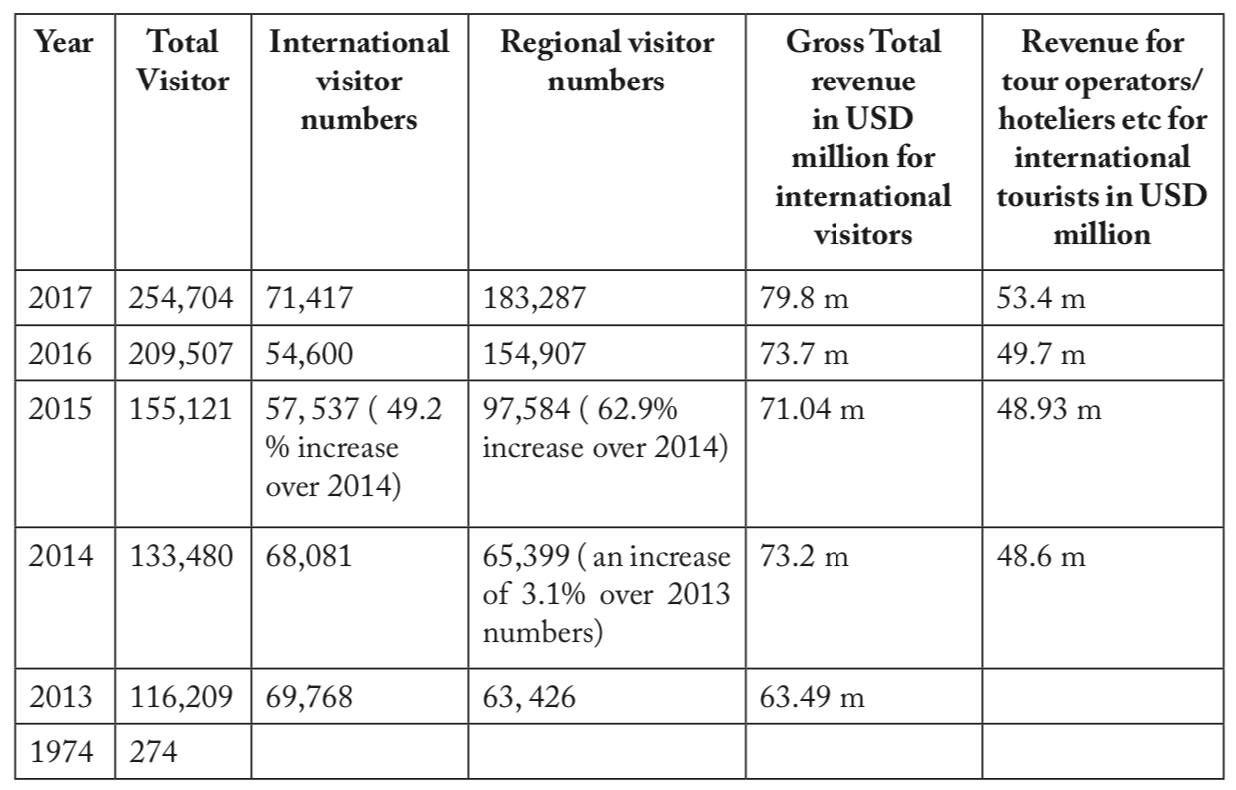
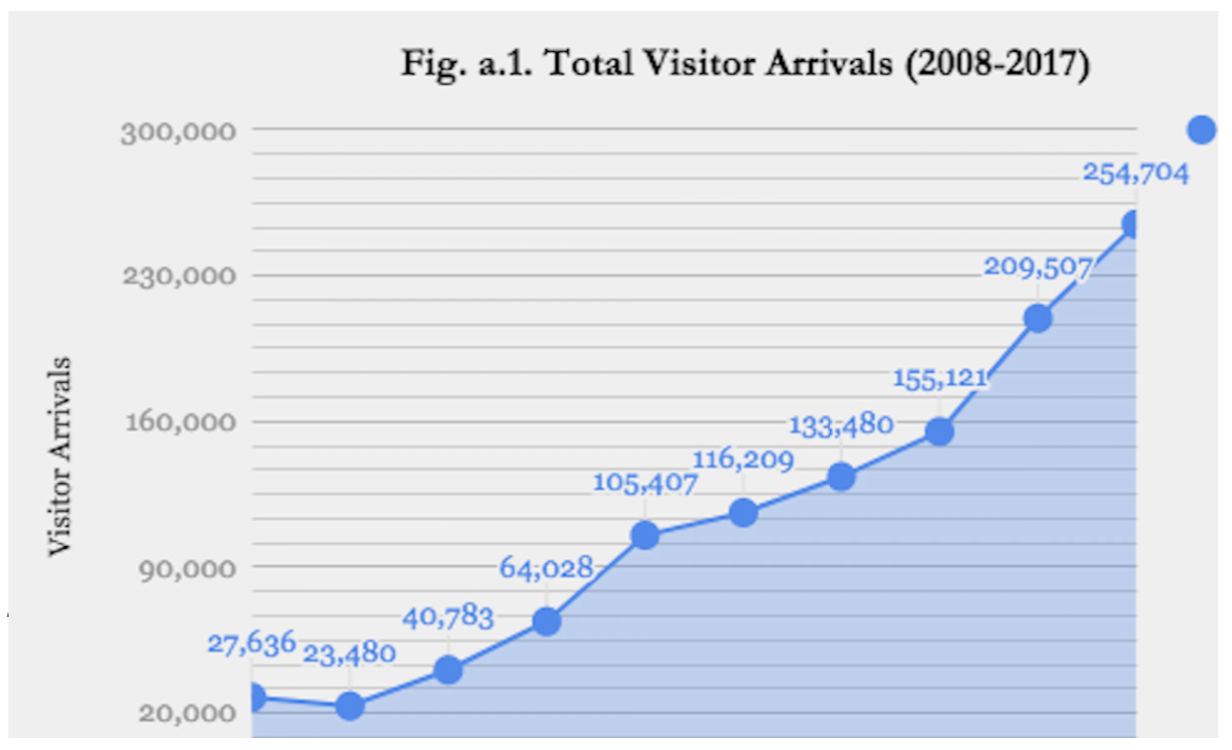
Tourism arrivals in Bhutan (TCB figures), 2008 - 2017. (Graphic: The Druk Journal)
There are 3,100 licensed operators today but industry observers estimate that only about a quarter of them are active. Close to 2,500 guides have been licensed. Tourist class hotels have also grown from seven guest houses before 1991 to 53 international “tourist class” hotels and lodges offering 1,807 beds by 2002. By 2016, there was a total of 267 hotels with 10,278 beds for both foreign and regional tourists. 128 of them are in the 3 to 5 star category and above.
Since 2016, an estimated 132 hotels (3-star and above) have been approved for development in Thimphu and Paro (TCB figures). Budget hotels, 2-star and below, are also increasing in numbers. Airbnb, a global online accommodation booking system, advertises about 70 or more Bhutanese properties that enable regional tourists to make direct bookings. Nearly half the regional tourists stay in budget hotels and the earnings from these stays are not available.
Similarly, TCB surveys on regional tourists leaving Bhutan show that on average, about half the regional tourists surveyed individually spend about Nu 5,530/-apart from their normal travel costs1. This is a fraction of the total spendings of international visitors who represent a third of the total visitors.
Attractions and Access
Nineteen out of the 20 districts in Bhutan are open to tourists but the most popular destinations continue to be the districts of Thimphu, Paro, Punakha, Wangdue Phrodang, and Bumthang, where most of the budget hotels are being built. The remote districts have the same features that attract tourists but lack the management, organisation, resources and access.
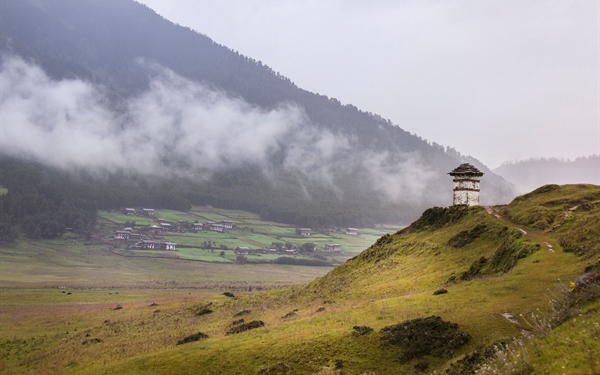
Phobjikha valley in Wangdue Phodrang. (Photo: Druk Asia)
Bhutan has opened 26 trekking routes across the country but two-thirds of them remain difficult to reach and need more facilities and services for high-end treks. Ironically, a part of the problem is the need for special travel permits that require cumbersome procedures. Industry specialists also point to the lack of regulations to govern the construction and occupancy of hotels, and the quality and safety of vehicles that are allowed into the country. Regional tourists without guides have even been spotted camping illegally in the forests. Regional tourists are exempted from the daily tariff, permitted to drive into Bhutan in Indian vehicles, and stay at non-certified hotels.
This would translate roughly as USD 7.03 million for regional tourist spending above the cost of accommodation which is not available since many go directly to budget hotels. The figures show that regional tourists bring in just a fraction of the overall earnings compared to international visitors who represent just a third of the tourist numbers.
“We are vulnerable to crowds that will destroy our culture and environment,” says the chairperson of the Association of Bhutanese Tour Operators (ABTO), Rinzin Ongdrak, who acknowledges that Bhutan cannot afford to reduce the tariff or liberalise the industry to encourage mass tourism. ABTO has called for collaboration amongst stakeholders such as the Guides Association of Bhutan and the Hotel and Restaurants Association, and expects tourism arrivals to reach 500,000 by 2023.
But the numbers that do not pay the tariff are already threatening to edge out the high-end visitors. Aman Kora’s General Manager, John Reed, quotes agents in the United States as saying that Bhutan is no longer the idyllic and sought-after destination, but one that is prone to mass tourism. High-end operators agree.
Regional and International Tourists
The spiralling growth of regional tourists since 2015 has been straining the industry and adding pressure to liberalise tourism. Visitors from India, for example, represent 64.7 percent of tourists who came for leisure in 2016, and 72.7 percent of total arrivals in 2017. In 2017 just one third of tourists paid the tariff.
“All the regulations in Bhutan regulate the 70,000 international tourists, but there’s almost nothing to guide the regional tourists,” said Yeshey Norbu, proprietor of one of Bhutan’s top three travel agents, adding that this could edge out the international tariff paying tourists.
David Keen of Quo, a travel industry branding specialist and a regular visitor, says that the early 1990s policy, controlling tourist flow, enabled Bhutan to retain its dominant position as one of the most pristine, culturally and environmentally conscious nations on earth.
“With the growth of regional traffic and incrementally affordable tourist flow, the environmental, social and cultural impact of huge tourism numbers will continue to erode both perception and the internal infrastructure of the nation,” says Keen.
Environmentalists like Karma Tshering also defend the fixed minimum pricing system.
“The limited carrying capacity, due to the ecologically and culturally sensitive disposition of attractions and services, means we are already close to reaching our upper limits. Dismantling the pricing system will only mean achieving higher numbers at a faster rate with cheaper costs offering less benefits.”
Increasing Infrastructure in a High Value, Less Occupancy Scenario
Some attempts are being made to control budget travellers. Setting an entry fee to places like the Tiger’s Nest has helped, but the numbers are growing exponentially.
“We can handle more visitors with good management practices,” said Norbu. “But not in the current free-wheeling environment, where no one seems to be taking tough decisions to regulate and manage the industry.”
An often quoted example is that while the Tourism Council regulates the tourist hotels (3-star and above), budget hotels fall under the purview of the Ministry of Economic Affairs. Airbnb is considered private residences.
Growing tourism is also affecting local residents and municipal services. Parts of Thimphu city are experiencing water shortage. Municipalities worry constantly about waste management, and Thimphu’s landfill has long surpassed its lifespan.
“I was shocked to see the garbage everywhere and the traffic jams in Thimphu. It’s not what I expected of Bhutan,” says a first-time visitor from Delhi, who added that the reality in Bhutan was very different from what he had heard.
Observers point out that even India’s hill stations have had to call for a “de- growth” of tourism as residents are crying out for basic amenities. The local population has also been known to turn against the industry and visitors.
Revenue Versus Consequences
Bhutan, too, is receiving calls for de-growth of tourism to protected areas. A 2016 study on Bhutan’s most visited wetland habitats has called for a “de-marketing” of Phobjikha Valley in the absence of regulations and a strict code of conduct. Karma Tshering also an eco-tourism consultant says that Bhutanese authorities and local communities are more reactive than preemptive in averting negative impact. He asserts that Bhutan’s plans to popularise eco-tourism has not yet taken off.
A road now runs through Phobjikha’s valley floor. Traffic regulations are absent and, without water treatment and septic systems, detergents from even high-end hotels are leaking into the ground. In 2016, Phobjikha had 30 home-stays and 15 hotels. Another seven to eight hotels are in the pipeline. People in Phobjikha report that a helicopter service frightens the Black-necked Crane (Grus nigricollis), according to the people.
“Wetland is the heart of Bhutan’s environment, but it’s losing out to the pursuit for economic returns,”says Karma. The report states that community involvement needs urgent attention and is critical for the success of eco- tourism. Local community members, however, lament the lack of control and their helplessness as investors from outside build hotels in Phobjikha.
A Disorganised Industry
In 2016, ABTO pointed out that the lack of collaboration and co-ordination in promoting and developing tourism has “stagnated” the industry, with various stakeholders “implementing actions in isolation”. A lack of consultation has led to government approving budget accommodation infrastructure, and banks giving loans for building these budget hotels.
The report points out that even the local governments have gradually started to take decisions without consultations hampering the overall operation and development of the industry. Infrastructure development like road expansion is carried out without advance notice and consultations with the stakeholders.
Uncharted growth is more visible by the day. About 100 hotels are currently being constructed in Thimphu and Paro alone-rooms that are multiplying without a business plan and without a vision, and in breach of zoning regulations. In the shortage of quality local products, a deluge of cheap crafts are imported for tourists. An industry analyst predicts that hotel owners, unable to repay bank loans, will soon pressure the elected government to liberalise tourism even further.
“The tail will wag the dog,” he said.
Risks of Uncharted Growth and Possible Solutions
Given Bhutan’s vulnerability, an unregulated tourism sector is not an option. Tourism is a multi-dimensional industry where planning needs to be integrated with the communities involved. ABTO attributes many of the challenges in the tourism sector to the absence of a clear short and long-term progressive vision for the industry to move ahead.
To those paying high fees for exclusivity, “double standards” are not acceptable. The TCB believes that the policy needs to be same for all tourists but that it could consider a separate tariff for regional tourists. Former Tourism Director Chhimmy Pem (this interview was done in 2018 when she was still the director. The director-general of TCB now is Dorji Dhradhul) says that there should be a minimum standard for hotels, tourists should be accompanied by a guide, and there should be rules governing transport.
The industry has identified issues that require clear decisions and action:
-
Regulations for regional visitors to balance the numbers. Bhutan’s National Council called on the government to endorse a clear policy in Parliament in 2016 that is still awaiting action.
-
Reports point to the “reverse discrimination” in protected areas. Local communities must be included in planning for sustainable tourism.
-
Strengthen the capacity of local people to handle visitors and build appropriate services to spread the earnings. Simply providing discounts during the off-season is not enough to get people to visit these areas.
-
Create a more equitable partnership between hotels and tour operators and reduce the dependency on tour operators for hotel bookings.
-
Spiritual sites are living institutions and should be opened up to visitors with minimal negative impact. Hence, the need for trained guides and crowd control.
Bhutan’s planning document, the Bhutan 2020 report states:
“While giving access to our heritage, we must ensure that those who visit historical and religious sites demonstrate the appropriate respect for these sites. We must also be prepared to place some of our most treasured and hallowed sites beyond the reach of the merely curious, enabling them to retain their mystery and to serve as a source of inspiration”.
-
Introduce regulations like the green tax on regional cars and motorbikes coming into Bhutan.
-
Introduce updated regulations on monitoring and approval of the building of hotels. Encourage budget hotels to upgrade to a minimum of 3-star status to maintain the “high value” principle.
-
Formally introduce the TCB e-permit system to reduce the long queues in the Phuentsoling checkpost and to enable the industry to track the number of regional visitors coming into Bhutan.
-
At the rate at which budget hotels are expanding, Bhutan has to make a decision urgently.
As the world grapples with over-consumption and growth, the new catchphrases emphasise the opposite-de-growth, de-marketing, slow tourism to resist the growth fetish. This thinking was pioneered in Bhutan when it began tourism, and has been the subject of study and recognition by other countries. TCB believes that the Sustainable Development Fee must remain.
“Countries like Japan and New Zealand are trying to copy Bhutan and introduce tourism fees; it’s better we keep what we have,” says Madam Chhimmy.
Destinations inspired by de-growth thinking are wary of the homogenising impacts of globalisation. They do not have international retailers nor fast -- food outlets, but instead promote local distinctiveness and a sense of place and local identity. By doing so, they attempt to reduce the scale of the socio-economic system so that it will fit within the natural limits of their locality and capacity, such as the case of Phobjikha as a destination.
Veteran tourism stakeholders remind us of the many countries that came to study the high end, low impact model and how Bhutan is now, ironically, on the brink of tipping over if the complacency continues. If there’s one challenge of Bhutan’s democratic change, it is the ability -- or inability -- of newly elected governments to deal with a multi-dimensional industry and to take tough and clear decisions for the long-term.
While TCB defers to the government to make the tough decisions on regional tourism, the governments elected by the people do not seem to have the confidence to take these decisions, and have not prioritised tourism as an issue.
A draft Tourism Bill was prepared nearly 10 years ago but was never put to Parliament for adoption. Some measures were introduced, including the setting up of a Tourism Council to regulate the industry. Last year, the National Council raised the issue of passing the Bill but the government delayed decision on it.
In 2016 His Majesty The King reminded Bhutan’s youth:
“... tourism as an industry was only introduced after the Coronation of His Majesty the Fourth Druk Gyalpo. It was suggested to us then that Bhutan would benefit economically from bringing in as many tourists as possible into the country. At that time, Bhutan was largely unknown to the outside world. And yet with Drukgyal Zhipa at the helm, we had the confidence to make our own decisions, to decide that our approach to tourism policy would be that of high value low volume. It seemed counter- intuitive at a time when tourists coming to Bhutan were so few. There were many sceptics. But because of that policy, Brand Bhutan emerged. And you see the results of that policy for yourselves today. People who make it to Bhutan feel privileged to be our guests. In hindsight, we realise the profound wisdom of that decision, but we could have easily gone the other way had it not been for that conviction we had to forge our own path, our future, and our destiny.”
Has Bhutan forgotten this wisdom?
This article was first published in The Druk Journal, Vol. 4, Issue 4, and has been edited for Daily Bhutan.
